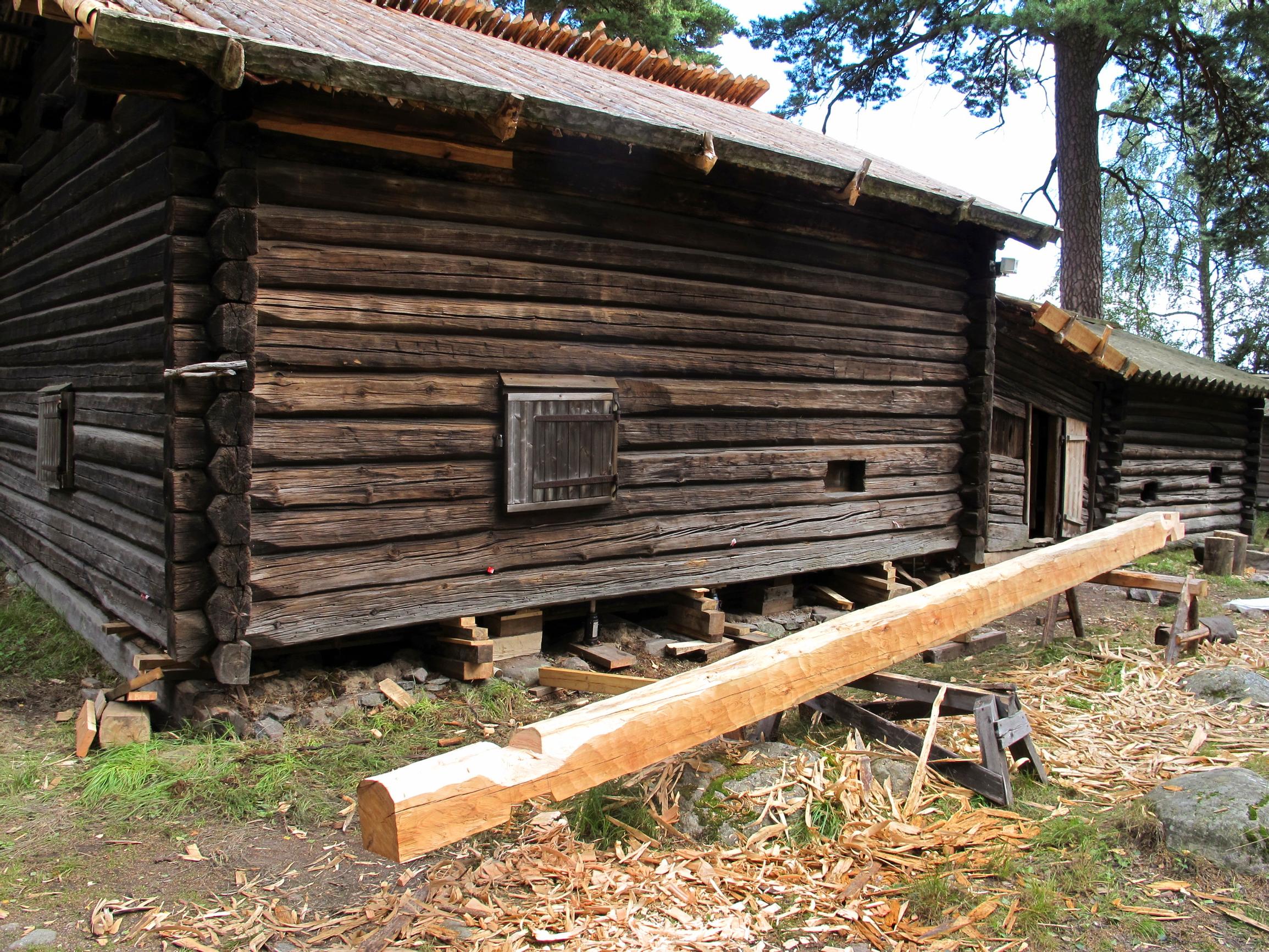
Wood rot in an old house? Most damage can be repaired with the right materials—see a heritage builder’s tips
The first step is to figure out what’s causing the damage. Read on and see expert advice and useful tips from a building conservator on how to repair dry rot.
Is damage caused by wood rot common?
Old wooden buildings sometimes need minor repairs, but that is no reason to panic. Major rot damage and deformations in load-bearing structures require immediate attention, while everything else can usually be looked into with less urgency. If an old log house appears to be in decent condition and has been looked after, there typically won’t be serious problems unless it has been renovated incorrectly. Over the years, people have sometimes used unsuitable materials with good intentions. Now, we’re turning back to the benefits of traditional materials.
Where is rot typically found?
It’s often found in the lowest and topmost logs, in corner and interior wall joints, and at the lower parts of windows and doors. You should also check where intermediate floors and the attic meet the exterior walls, the base floor, and around chimneys. The cause of the damage has to be identified. Fixing just one spot won’t help if the real problem is elsewhere: a leaky roof can lead to a rotten wall log.
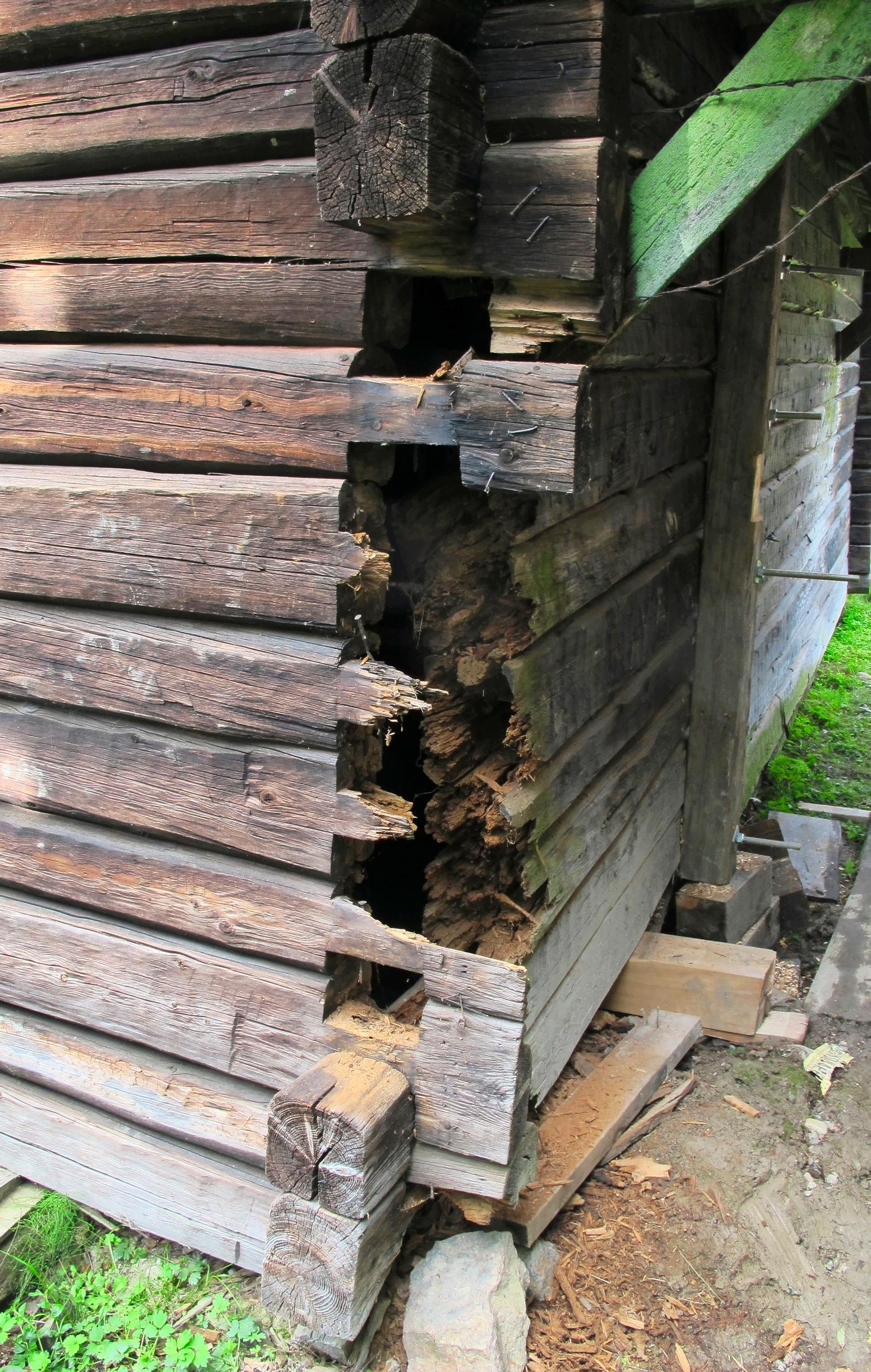
How can you investigate the building yourself?
It’s a good idea to live in the house for a year so you can see how it behaves in every season. Use all your senses and note your observations. Poor indoor air could mean insufficient ventilation. A relative humidity above 85 percent can harm materials over long periods of time. Probe the lower logs with a sharp tool, climb into the attic, and crawl under the ventilated foundation. If necessary, you can open the wall cladding without causing damage.
Which signs hint at hidden damage?
Big dark patches on the ceiling or on wallpaper can indicate moisture. Severe damage in a log frame can cause structural deformations—if the load-bearing and binding elements of the intermediate floor detach, the walls may bulge. A mound of wood dust that returns after cleaning could be a sign of wood-boring insects.
What should you do before starting a renovation?
Look into the building’s history and earlier repairs, then do a thorough damage assessment. If significant work is needed, consult your local building authority about any required permits. Before beginning, carry out a hazardous materials survey to protect your health and that of any workers. Dangerous substances can include asbestos, heavy metals in pressure-treated wood, and PAHs (polycyclic aromatic hydrocarbons).
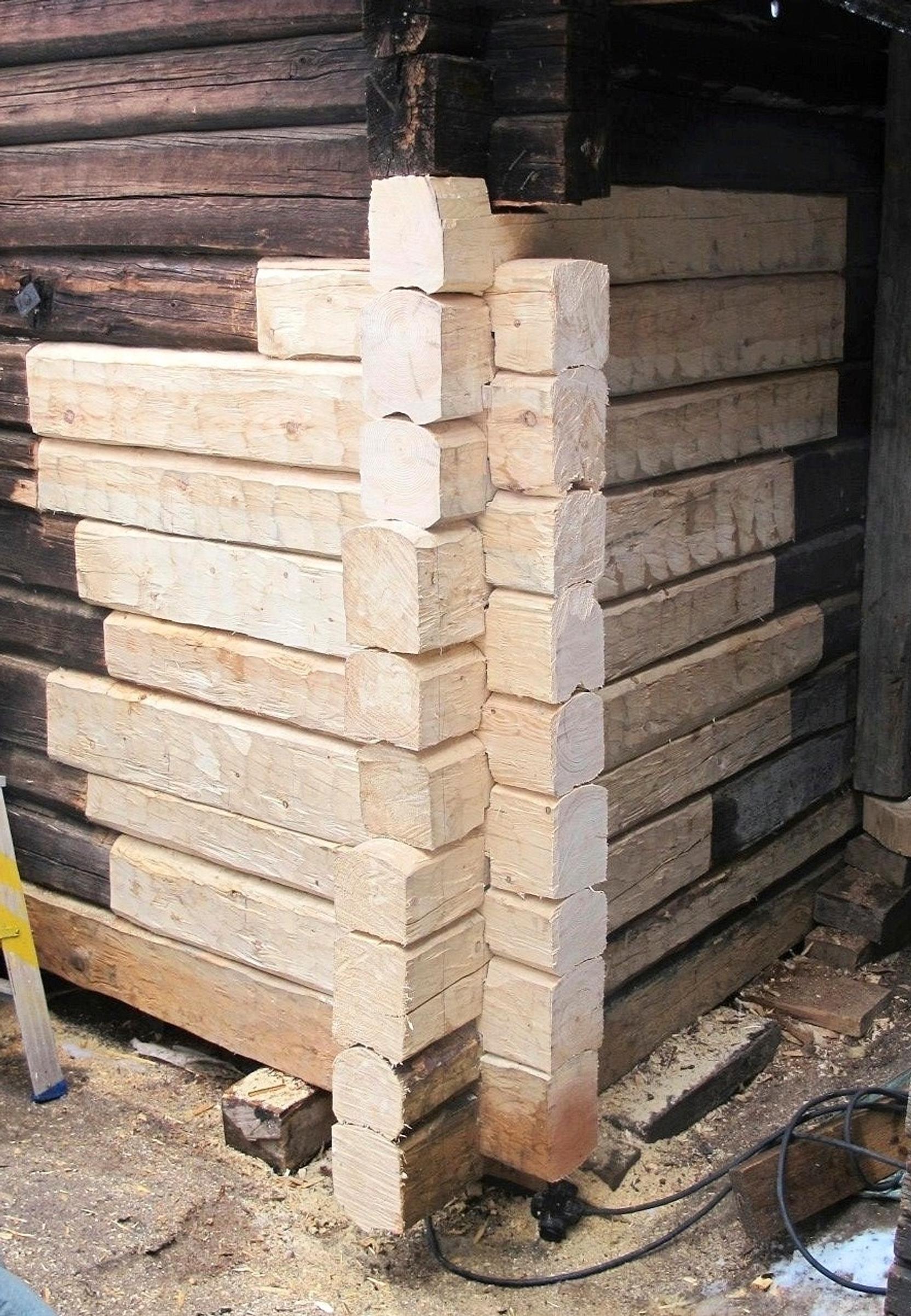
Do you need a professional to repair dry rot?
If the owner doesn’t have the necessary expertise, it’s a good idea to consult restoration or conservation specialists in old buildings, at least for major work. You also need to consider scheduling, materials, and costs. Involve those doing the repairs in planning, since they have valuable hands-on experience.
What kind of wood is best for repairing dry rot?
High-quality pine that has been stored for at least three years is a good choice for fixing an old log house frame, since it won’t move much. Ideally, it should be winter-felled, with tight growth rings, from a tree of around 40 years or more so it has resin-rich heartwood.
Where can you find quality wood?
Contact a small-scale sawmill a year or two in advance, and be prepared to store the wood yourself in a well-ventilated, covered stack. A roofed, open-sided structure that sheds rain but allows airflow is ideal.
Are reclaimed logs a good option?
Older pine logs with dense growth rings are often still usable and won’t shrink any further. Bring along someone who can assess their quality when you’re checking them out.
Which insulation materials suit an old house?
If old insulation remains, you usually don’t need to replace it. Peat, moss, sawdust, and sand around the chimney base are still effective. If you use a modern insulation product, pick one that’s been on the market long enough to prove reliable.
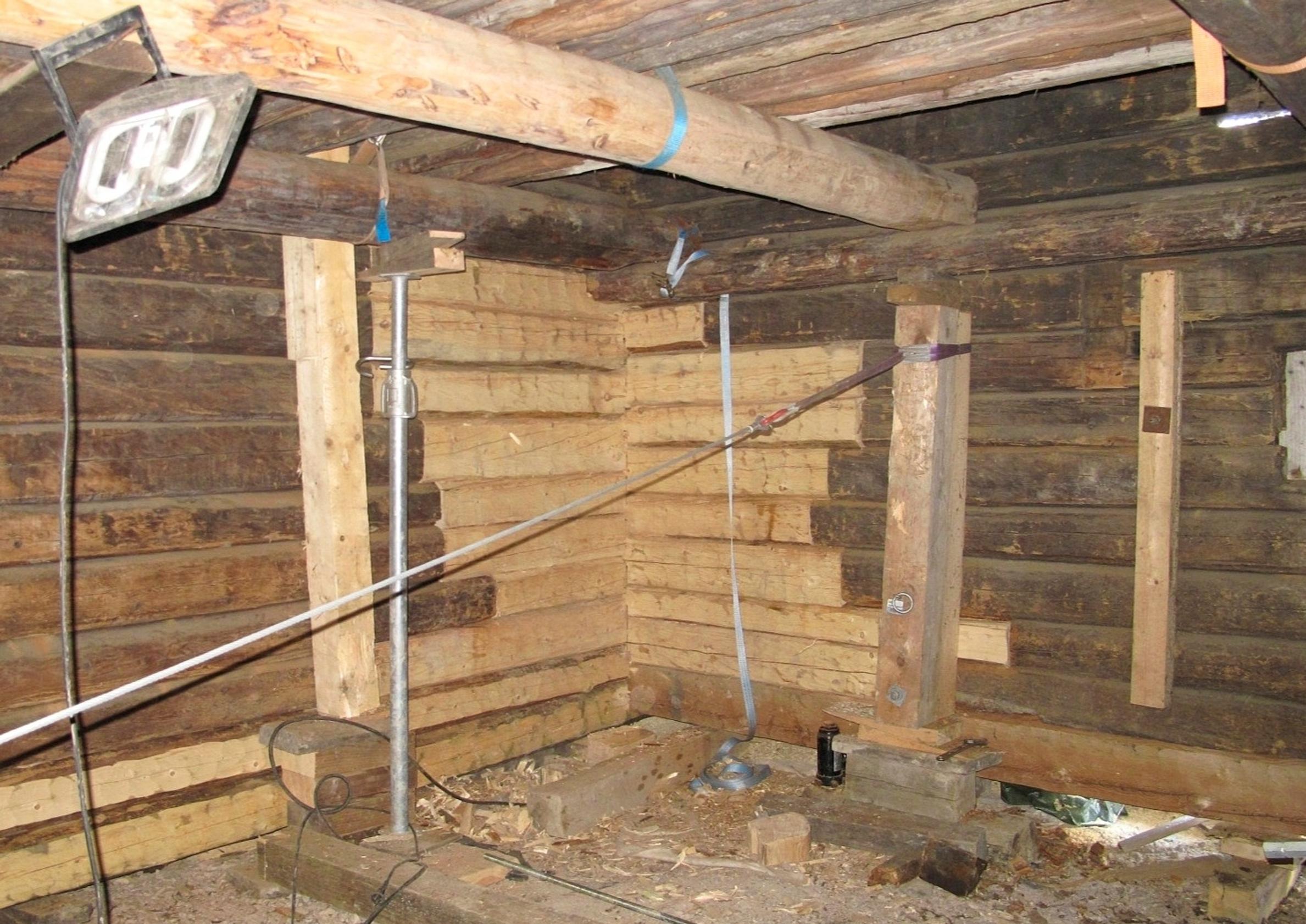
What can you do yourself if you don’t have much experience?
If you’re handy, there’s a lot you can do, and you can always learn along the way. You can patch small areas in logs by removing and replacing wood or repair sections of exterior cladding. You can also fix windows and doors on your own. If you’d like to try replacing logs, start with the bottom log of a small structure like a shed or sauna.
What tools are needed?
Traditional hand tools like an axe, handsaw, and knife can accomplish a lot. If you want to cut the wood into more precise pieces, you can use power tools—just remember they’ll leave machine marks.
How much wood should you remove from a rotten section of a log?
Keep the repair limited to the decayed area, unless you find a more serious fungus. The best approach is to proceed gradually, patching logs and replacing fully rotted parts. If at least half of the log is still solid, it’s worth patching. Traditional joinery is used to join the original log to the new piece.
How is patch repair done?
Outline a simple opening and remove the decayed wood with an axe, knife, or chisel. Carve a matching patch from air-dried wood of the same species, and angle the surfaces so water can run off. Try to attach it subtly—if possible, peg it from inside the wall. You can secure smaller patches with bright finish nails, which will become less visible as they rust. Although this process is fairly straightforward, it does require some skill.
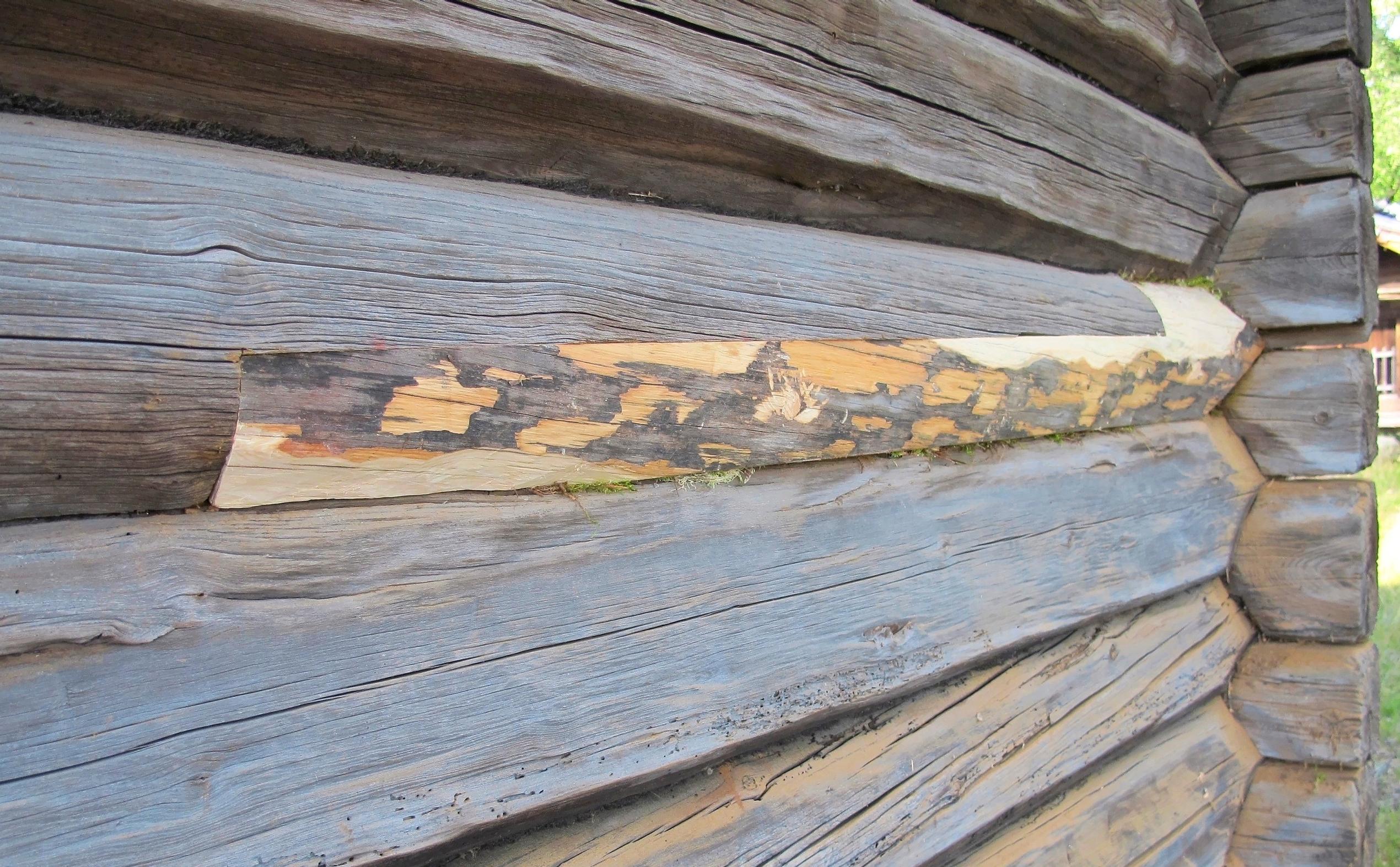
How do you prevent new rot damage?
Make sure everything from the roof to the foundation is in good shape and keep the house well maintained. Clean the gutters, close the foundation vents in the fall and open them in the spring, ensure water doesn’t run under the house, and remove any trees or shrubs growing too close.
Where can I find more information?
You’ll find both established repair guides and new material on the Finnish Heritage Agency’s website. You can also reach out to experts at museums with regional responsibility for advice. It’s worth reading up on the subject, even if you don’t plan to do the repairs yourself—you’ll be better prepared to insist on high-quality, traditional methods from those you hire.


